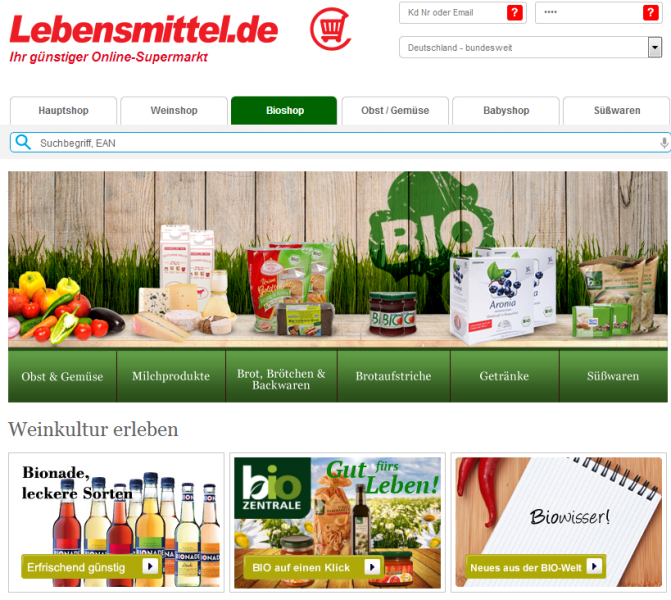A growing e-commerce trend is attracting the attention of customers, retailers and investors across Europe. Purchasing food with a click, picking it up at the nearest store or having it delivered at home, more and more consumers are seeing the benefits of online food retailing – and participating.
The potential is everywhere but, it’s especially present in regions with a low population density, for example, in Scandinavia. It’s here where online grocery retailers are presented with favorable conditions and are able to generate extraordinary sales.
The population living in these areas have to cover greater distances to reach the nearest grocery store – a gap that online food retailers could supply and fill. Investors quickly identified this market potential and have are acting on it.
Currently, high capital has been invested in the Swedish online grocer MatHem. This e-commerce company combines a complete grocery store online with recipes and subscriptions for ready-made groceries.
Online grocery retail is not only gaining traction in rural areas; it’s also becoming increasingly important for retail chains operating internationally. Philip Clarke, CEO of Tesco, emphasized that it plays a key role in the company’s future. He says, “Food shopping online is all the growth we have in our core food business in the UK. People are opting out of the store((https://www.retail-week.com/grocery/tesco-boss-philip-clarke-embarks-on-digital-revolution/5040941.article?authent=1)).”
The Institute of Grocery Distribution (IGD) also forecasts online food retails as having a great impact, with sales doubling on average by 2016 in five northern European markets:
- Britain
- France
- Germany
- Switzerland
- Netherlands
Entering the German eFood market is profitable
A recent study by A.T. Kearney interviewed 700 consumers about their purchase behavior The number of German consumers purchasing groceries online has grown from 18% in 2011, to 27% in 2013. The market value for online food retail in 2012 is estimated at a hefty 370 million Euros.
The study also found that the key motives for shopping groceries online are:
- The convenience of home delivery (38%)
- Curiosity (33%)
- Attractive prices (27%)
- Time efficiency (25%)
“Figures finally prove that eFood and grocery distribution are no longer in a shadowy existence,” remarks Christoph Wenk-Fischer, CEO of the German E-Commerce and Distance Selling Association.
 A growing trend: Online pure players like Lebensmittel.de are winning more and more market shares in online grocery.
A growing trend: Online pure players like Lebensmittel.de are winning more and more market shares in online grocery.2 big challenges: gaining customers and their loyalty
The survey revealed two important details. First, the majority of respondents have never bought food online due to:
- Exisiting shopping possibilites (66%)
- Lack of visibility and tangibleness of online products (60%)
- Unsafe product quality (55%)
Second, growth results mainly from occasional buyers while loyal customers remain scarce. The majority of German online shoppers end their journey after one to three test orders.
A Europe-wide study by McKinsey, which included 4,500 consumers from France, Spain and the United Kingdom, revealed similar results. In France, for example, only about a quarter of consumers who have shopped online for groceries one, continue to do so regularly. Unsafe product quality is the main concern for French shoppers, followed by reduced product assortment and additional fees.
Learn how to gain new customers and their loyalty by reading part II of our eFood series.